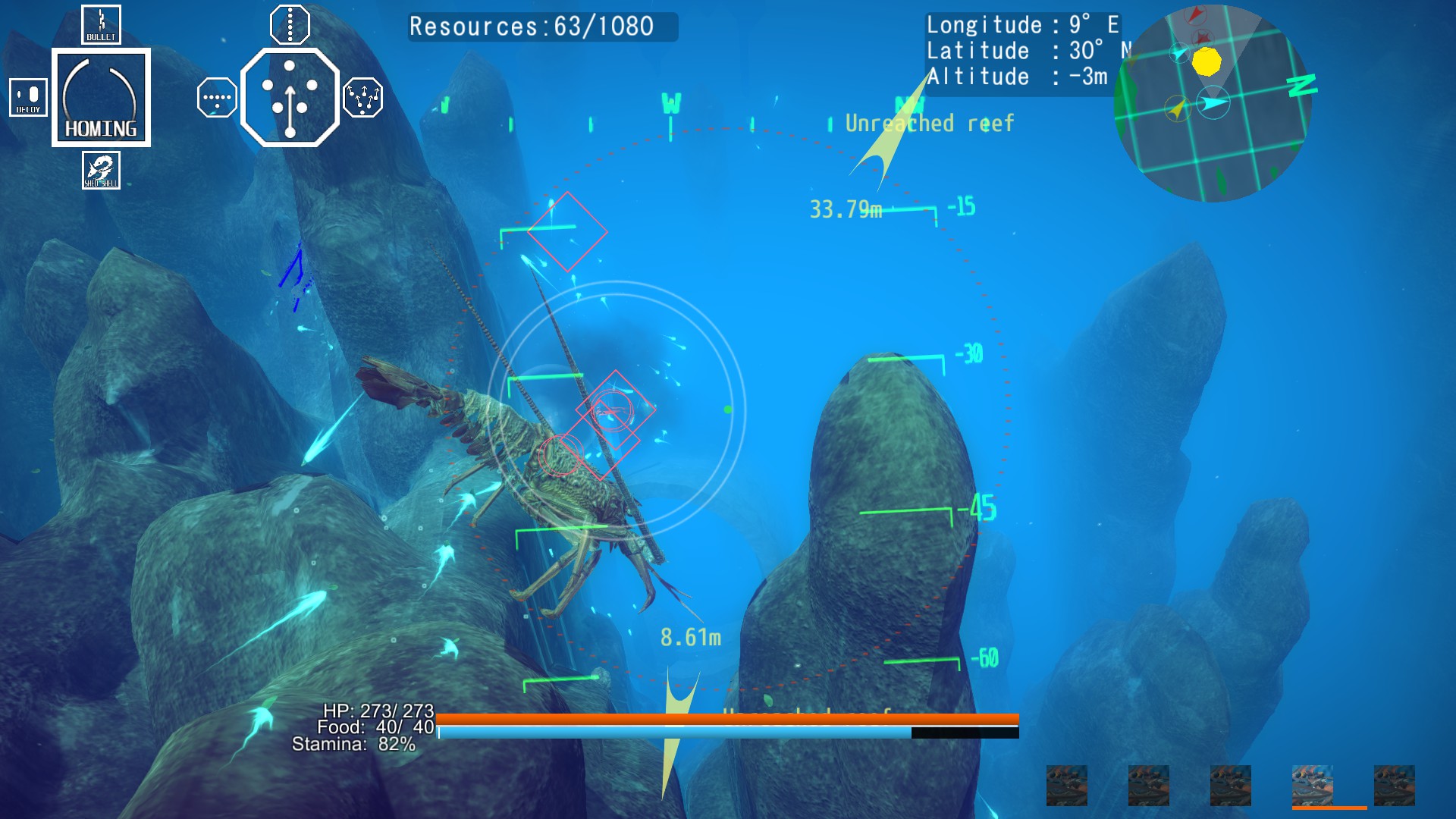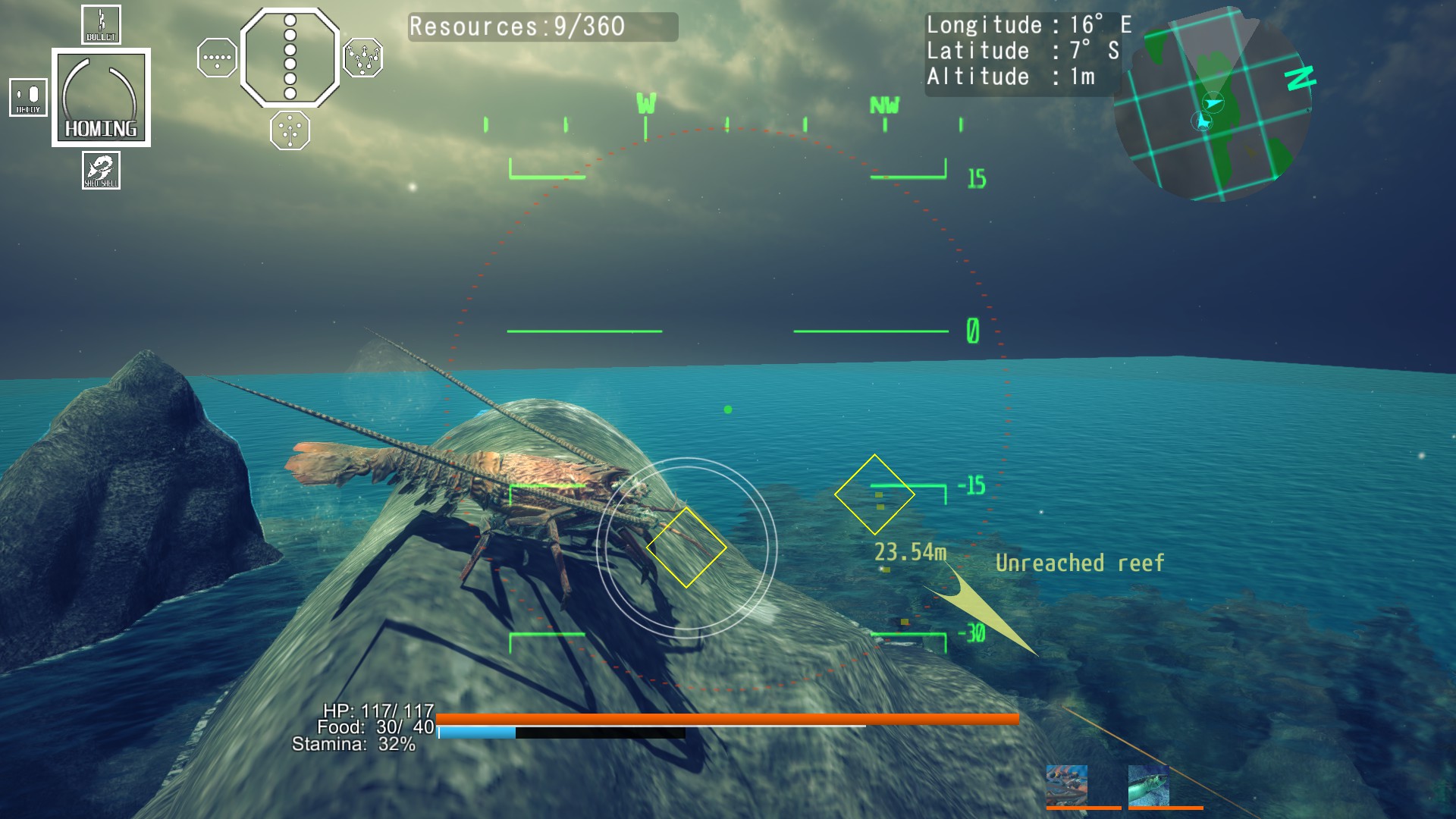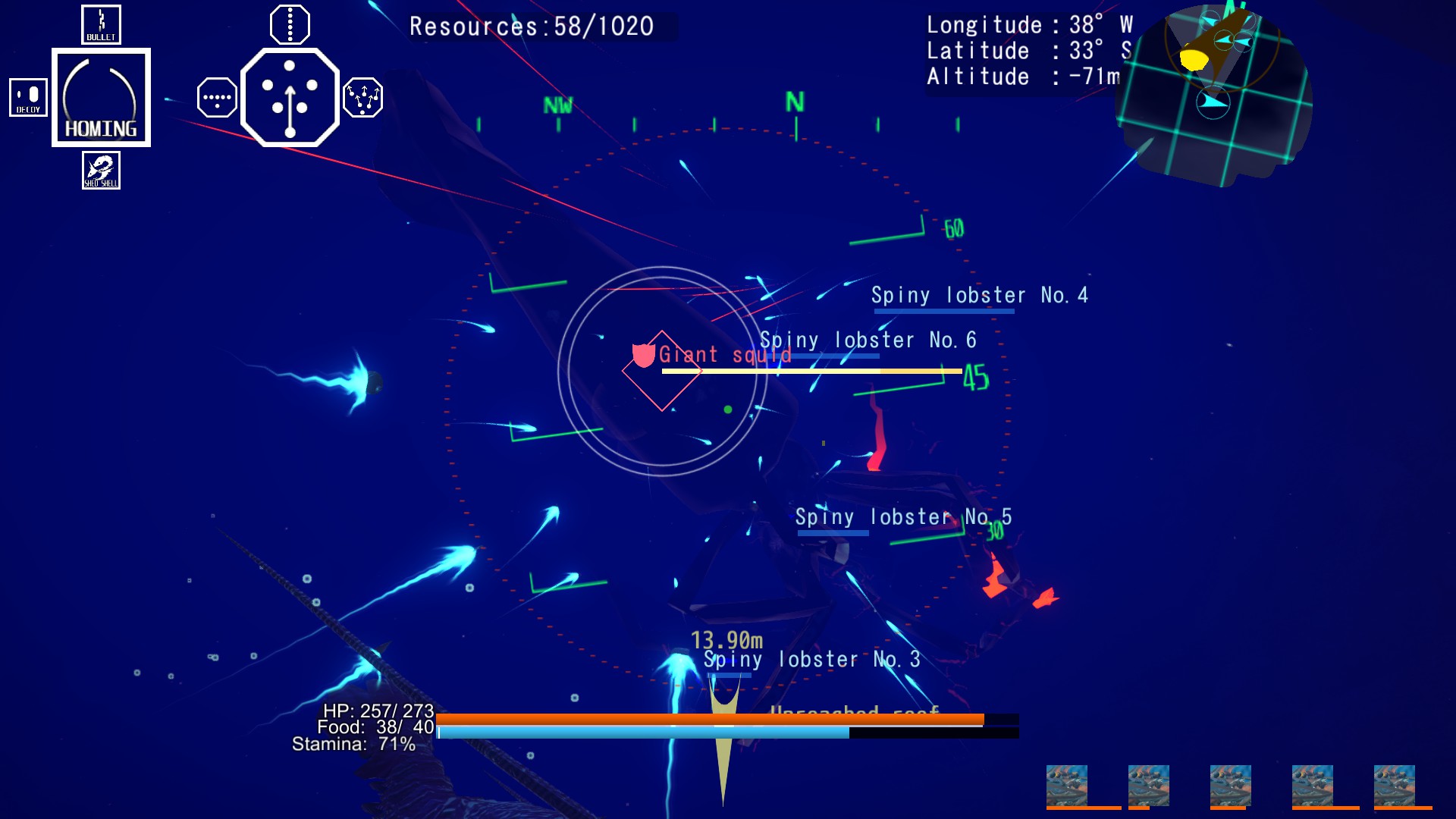Conquer Earth with an army of laser sharks and battleships in this ludicrous action game

I am a lobster, and my life is simple. I hunt sardines, seek shelter from tuna, breed as many offspring as I can and destroy submarines with homing missiles… wait, what? I'm pretty sure arthropods don't have intelligent projectiles. Ace of Seafood is about as unassuming as games come, but it hides an alluring adventure about rearing squadrons of fishy warriors and conquering the deep.
When you first take the helm of your school of fish—you can select sardines, salmon, or spiny lobsters as your starter—you're welcomed by a chill, down-tempo electro track that would have been at home in a late ‘00s cocktail lounge. From there you have a short tutorial and that's it. You're left to probe the ocean's waters and build the biggest, baddest pack of aquatic creatures you can.
I started my run with a pair of lobsters, rightly assuming that their carapace would make my posse a bit hardier. I tacked north and east first, searching for natural or man-made reefs. These act as safe havens and save points. Most come with a tough, boss-esque school of fish that guard the checkpoints. From barracuda to cubera snapper, I had a stunning variety of marine life to battle, and later recruit.
Depending upon which fish you're currently controlling, Ace of Seafood plays like an awkward hybrid of a submarine sim and an Armored Core knock-off. You'll have a variety of attacks and formations you can choose for your school as well as some precision aiming options for those wanting to keep their distance.

As I turned my foes to chum, I collected their genetic material. After a point (usually three or four specimens) I could start breeding those creatures myself, adding their abilities to mine. Odd as it sounds, when I came across submarines and battlecruisers later in the game, I learned that I could kill them and collect their genes as well. While it made absolutely no sense, it let me run a solid mix of battle-ready animals and war machines.
I felt like Star Trek's Borg, eager to add my foes' biological and technological distinctiveness to my own.
My twin lobsters saw vampire squid, great white sharks and even dreadnoughts join their ranks before long. Battles against larger opponents were, tougher, but I was Inspired to press on. I felt like Star Trek's Borg, eager to add my foes' biological and technological distinctiveness to my own. It's an effective system that kept me looking to win out-leveled fights so that I could skip a few stages of the game. But that's also where Ace of Seafood starts bumping into some problems.
Each of the sea creatures you can play has their own set of abilities, and they all feel quite a bit distinct from one another. Vampire squid are best in swarms where they can launch volleys of laser-spines at encroaching predators, for example. But Ace of Seafood is a fiddly beast to control.
The biggest gaming news, reviews and hardware deals
Keep up to date with the most important stories and the best deals, as picked by the PC Gamer team.
I started with an Xbox One controller. I tend to prefer gamepads for expansive RPGs and thought it'd make a good fit here. But it was almost unplayable without a mouse. It would select some menu options by default and refuse to accept controller input. Switching completely to a KB + M only solved some of my problems, though.

Even under the best circumstances my lobsters' movements were jittery and spotty, often forcing me into the line of enemy fire. Aiming well was tough, and companion pathfinding AI was terrible. I often marched into a bout expecting my friends would be right behind me, only to be torn limb from limb as I struggled to fight alone. Because of that, I got into the habit of camping near new reefs or large sea monsters and wait for my crew to arrive before unleashing my salvos.
It was good fun, and so far as I could tell, arranging my fishy pals in squads and planning my approach yielded better results. As often as this game looks like swarms of spammy lasers and missiles, I did well when I put some thought into it. And, after a point, that became essential. The biggest monsters of the deep would wipe out my starters and even many of the tougher creatures I'd found in one or two hits. In response, I started coordinating my attacks. I'd put myself in the tankiest creature I could, and would keep a few faster creatures on hand to support my assault.
All of this is unusual, for sure, but somewhat normal. If you can buy into the premise of a tank simulator with fish in place of mobile armor, then you've got a good idea of what to expect. As the game progresses though, I got progressively creepy blurbs at loading screens. Phrases like "Physical DNA has been destroyed by gamma rays" and "People once dreamed of their bodies shining and emitting light. Their dreams became a reality" lend an unnerving atmosphere to these violent seas.
Before long, Ace of Seafood started tilting into the meta-realm. It suggested that I was in a simulation or controlling the only life forms left on Earth, and that my help would be crucial in "the new world." With that, my dogged pursuit of power and assimilation started to feel morbid and uncomfortable, silly as the notion of fish and crustaceans firing torpedoes and lasers was.
Despite the weird shift in tone and how frustrating the unreliable controls were, I couldn't stop playing. I dumped seven hours into the game before I knew I was still awake at 4 a.m. Once I started probing the dark abyss, I just wanted to continue exploring. I wanted to see what alien monsters lurked near the sea floor. So if you've got $12 and are curious about what it's like to pit sharks against warships, Ace of Seafood is your game.

